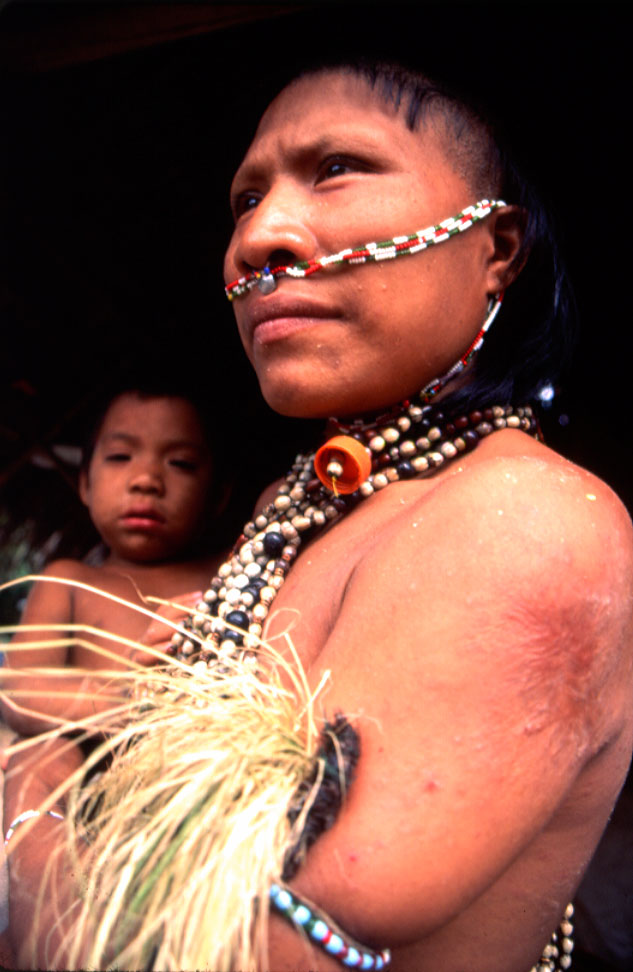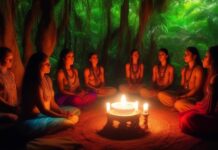- Agony and Ecstasy in the Amazon: Tobacco and the hummingbird shamans of Peru - January 27, 2022
- Toé (Brugmansia suaveolens): The Path of Day and Night - June 2, 2020
- Fifty Shades of Green - May 27, 2020
While such drastic measures of social distancing are novel and challenging in our hyper-connected contemporary world, indigenous peoples have long used the strategy of “voluntary isolation” to protect themselves from the immunological and existential threats of European colonization.
As governments around the world decide on public health measures to contain the spread of coronavirus, indigenous peoples across the Amazon, from the Madre de Dios Region in Peru to the Xingu Indigenous Park in Brazil, have taken the lead by declaring self-imposed states of quarantine to avoid the introduction of this virulent new disease to their communities. While such drastic measures of social distancing are novel and challenging in our hyper-connected contemporary world, indigenous peoples have long used the strategy of “voluntary isolation” to protect themselves from the immunological and existential threats of European colonization.

Indigenous peoples of lowland South America have contributed to global health with important biomedical compounds derived from plant medicines such as quinine, curare, ipecac and pilocarpine, as well as shamanic preparations like ayahuasca, sananga, and kambô that have attracted the attention of psychonauts and pharmaceutical researchers alike. And yet, tragically, the indigenous people of South America were also highly susceptible to introduced Old World diseases like smallpox, measles, whooping cough, and influenza that, in conjunction with violence and territorial invasion, killed some 90-95% of the original population.
To survive, some indigenous populations fled to remote regions and cut off all contact with outsiders, even their indigenous neighbors.
Especially during the so-called “Rubber Boom” at the turn of the twentieth century, rubber tappers seeking to profit from the high price of natural latex on international markets penetrated the deepest reaches of the Amazon, co-opting or enslaving indigenous people and spreading deadly diseases. To survive, some indigenous populations fled to remote regions and cut off all contact with outsiders, even their indigenous neighbors. In some cases, indigenous communities have been forced to abandon settled village life and agriculture altogether, adopting a fully nomadic lifestyle in the forest. Previous, at times misleading, descriptions of such groups as “uncontacted,” “Stone Age” or “hunter-gatherer” peoples implied that they were passive victims of some accident of geography or history — human societies left behind in the backwaters of human evolution. Today, scholars and indigenous protection agents have come to understand their isolation not as a natural condition, but rather, a conscious choice of survival and self-determination.
So, as people around the world hunker down in self-quarantine and follow the latest worrisome news, we are all getting a small taste of the kind of mortal panic that has motivated different indigenous peoples to isolate themselves from outsiders, in some cases, through the present.
The spike in burning, destruction, and invasion of the Amazon rainforest over the past few years, especially in Brazil, threatens all indigenous people, and isolated peoples in particular. The global outbreak of this highly contagious, virulent new disease poses a special danger to such immunologically vulnerable peoples. So, as people around the world hunker down in self-quarantine and follow the latest worrisome news, we are all getting a small taste of the kind of mortal panic that has motivated different indigenous peoples to isolate themselves from outsiders, in some cases, through the present. We all hope, as they have, that such radical measures will save us from this deadly epidemic. Perhaps we will come through this experience with a heightened appreciation of our shared fragility.
Art by Mariom Luna.
Take a minute to browse our stock:
Did you enjoy reading this article?
Please support Chacruna's work by donating to us. We are an independent organization and we offer free education and advocacy for psychedelic plant medicines. We are a team of dedicated volunteers!
Can you help Chacruna advance cultural understanding around these substances?














